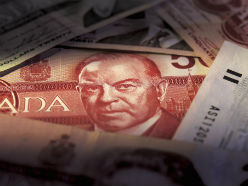
Finance Canada has released its annual report showing what hundreds of tax measures cost the government.
Turns out, the TFSA is worth about the same as giving us a break on apples and bananas for one year.
The TFSA is estimated to cost $3.7 billion in forgone revenue from 2010 to 2017, while not charging sales tax on basic groceries cost an average of $3.9 billion per year over the same period (a total of $31.6 billion).
Meanwhile, the RRSP, net of taxes on withdrawals, cost about $107.7 billion over seven years. But that’s not the largest tax measure from 2010 to 2017: it’s the basic personal amount ($11,327) given to all Canadian taxpayers, which cost $256.3 billion.
Business and investing
Prime Minister Justin Trudeau promised to limit the amount employees can claim through stock-option deductions, but we don’t know the details (although Finance Minister Bill Morneau has said that existing options would be grandfathered). But we now know employee stock option deductions cost an estimated $5.7 billion from 2010 to 2017. Compare that to the deduction of union and professional dues, which cost about $7.2 billion over the same period.
Other breaks of note include the favourable tax treatment of investment income from life insurance policies, which lost the government $2.2 billion from 2010 to 2017. The Lifetime Capital Gains Exemption cost $9.6 billion over the same period.
Read: TFSA or RRSP? The GIS may change the answer
Social programs
Collectively, education-related tax breaks cost $28.9 billion, with the RESP accounting for $1.2 billion. Charity-related breaks cost $36.7 billion, with the First-Time Donor’s Super Credit taking $25 million out of government coffers.
Ottawa spent $6.3 billion over the period on the Disability Tax Credit, but only $250 million on the RDSP – illustrating the complaint that the account is underutilized.
Read: Disability tax credits for dual residents
Other categories of note
Women will be pleased to know it only costs $35 million per year to remove the tax from feminine hygiene products (also known as the tampon tax). For comparison, allowing clergy members to deduct their residence expenses costs about $85 million per year.
Interestingly, the government deems the amount from rebates for poppies and wreaths to be confidential.
If you’re so inclined, download the full breakdown here.
